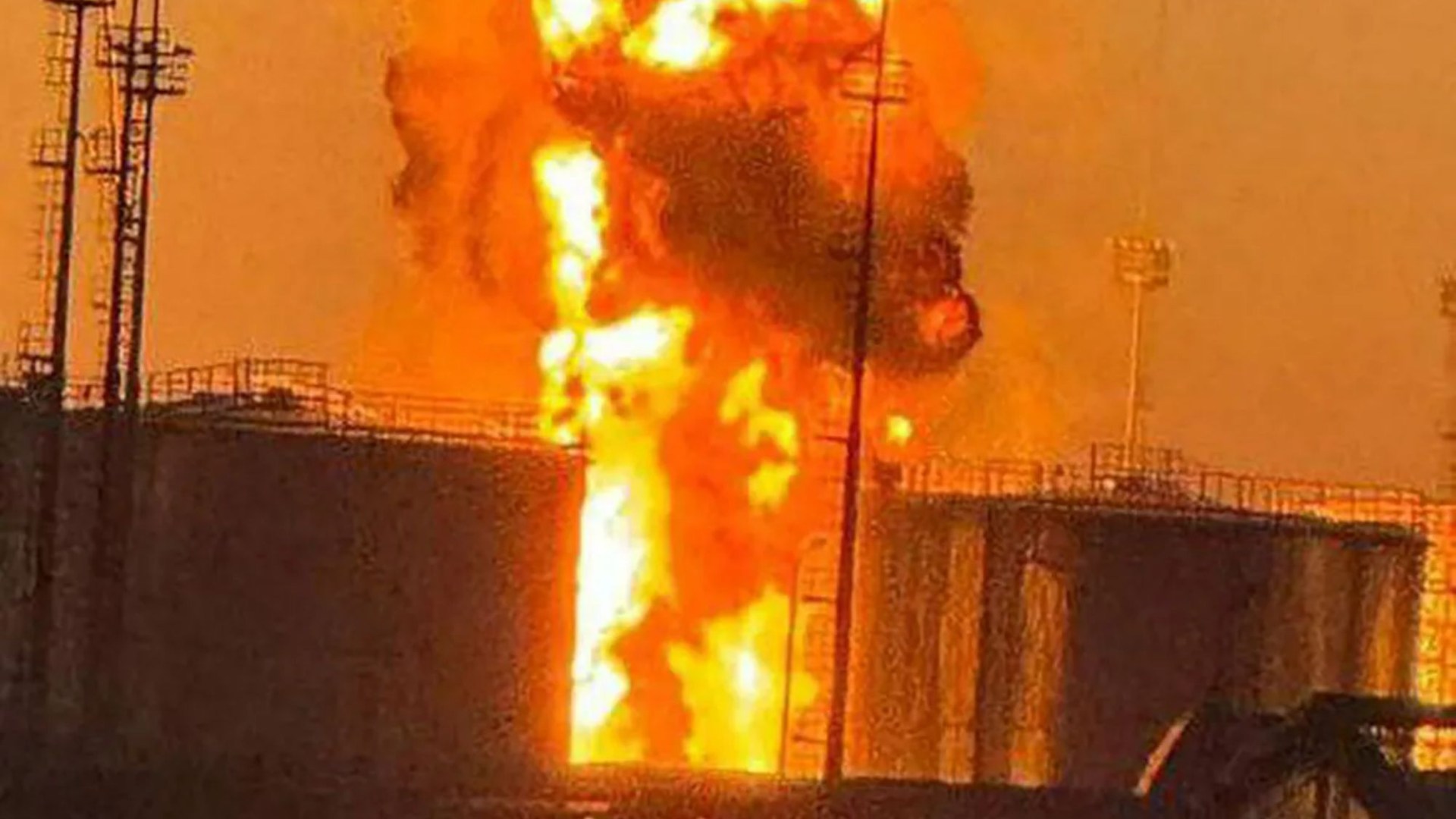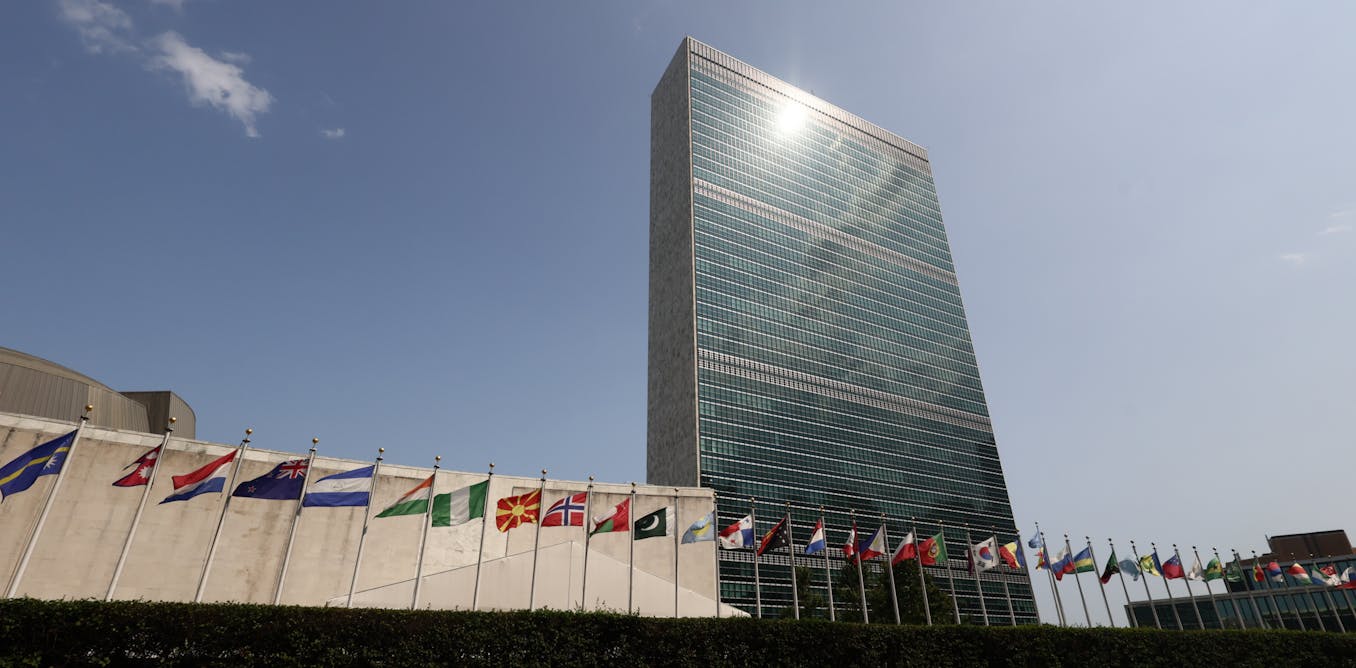THIS is the moment a massive inferno engulfed a Russian oil depot after being struck by a targeted Ukrainian kamikaze drone strike.
Footage shows gigantic flames shooting into the sky and thick black smoke pouring out of the Proletarsk fuel storage overnight.

5

5

5

5
The blaze reaches metres into the air and can be seen from miles around.
It marks a fresh blow to Vladimir Putin’s war machine as he also scrambles to deal with the invasion further north in Kursk.
Ukraine smashed the facility some 125 miles to the Ukrainian border in Southern Russia with a series of kamikaze drone strikes.
The flying bombs exploded on impact and caused the fuel to catch alight.
The aim of the attack by at least five unmanned aircraft on the facility in Rostov was to damage supplies to the Vladimir Putin’s military machine.
The blaze at Proletarsk was so serious that a fire-fighting train was sent to the oil depot.
Russian authorities claimed they had thwarted the attack, and that the fire was caused by falling debris from a drone.
Governor Vasily Golubev said: “A drone attack was repelled in the southeast of the Rostov region.
“Falling fragments set fire to diesel fuel stored at an industrial warehouse in Proletarka.”
It comes as Ukraine as targeted key Russian infrastructure during its surprise offensive into Kursk.
Footage released on Friday night showed a massive missile strike on a major bridge across the River Seym causing the bridge to collapse.
The hit threatened to cut off Russian troops defending their own country.
But, satellite imagery shows Russia has already built a temporary bridge further down the river in response.
Ukraine invaded Russia on August 6 and has since captured dozens of towns and capturing 1,150 square kilometres of territory.
Troops have reached 35km (21 miles) inside Russia after the surprise breakthrough and continue to push forward.
Putin has been humiliated by the invasion, which captured the same amount of land in eight days as Russia had in eight months.
Inside Ukraine’s invasion of Russia
Why has the Ukrainian invasion of Russia been so successful?
A DARING Ukrainian military push into Russia’s Kursk region has become the largest attack on the country since World War Two.
Kyiv’s forces have seized scores of villages, taken hundreds of prisoners and forced the evacuation of tens of thousands of civilians.
After more than a week of fighting, Russian troops are still struggling to drive out the invaders.
Why has Russian military been caught so unprepared?
Russia’s regions of Kursk, Bryansk and Belgorod share a 720-mile border with Ukraine – including a 152-mile section in the Kursk region.
And it only had symbolic protection before Moscow invaded Ukraine in 2022.
It’s been reinforced since then with checkpoints on key roads and field fortifications in places – but not enough to repel a Ukrainian assault.
The most capable Russian units are fighting in eastern Ukraine, leaving the border vulnerable to attack.
Ukrainian troops participating in the incursion were reportedly only told about their mission a day before it began.
The secrecy contrasted with last year’s counteroffensive – when Ukraine openly declared its goal of cutting the land corridor to annexed Crimea.
Ukraine ended up failing as troops trudged through Russian minefields and were pummelled by artillery and drones.
But in Kursk, Ukrainian troops didn’t face any of these obstacles.
Battle-hardened units easily overwhelmed Russian border guards and small infantry units made up of inexperienced conscripts.
The Ukrainians drove deep into the region in several directions – facing little resistance and sowing chaos and panic.
The Russian military command initially relied on warplanes and choppers to try to stop the onslaught.
At least one Russian helicopter gunship was shot down and another was damaged.
Moscow began pulling in reinforcements, managing to slow Ukraine’s advances – but failed to completely block troops.

5
More to follow… For the latest news on this story keep checking back at The Sun Online
Thesun.co.uk is your go-to destination for the best celebrity news, real-life stories, jaw-dropping pictures and must-see video.
Like us on Facebook at www.facebook.com/thesun and follow us from our main Twitter account at @TheSun.




